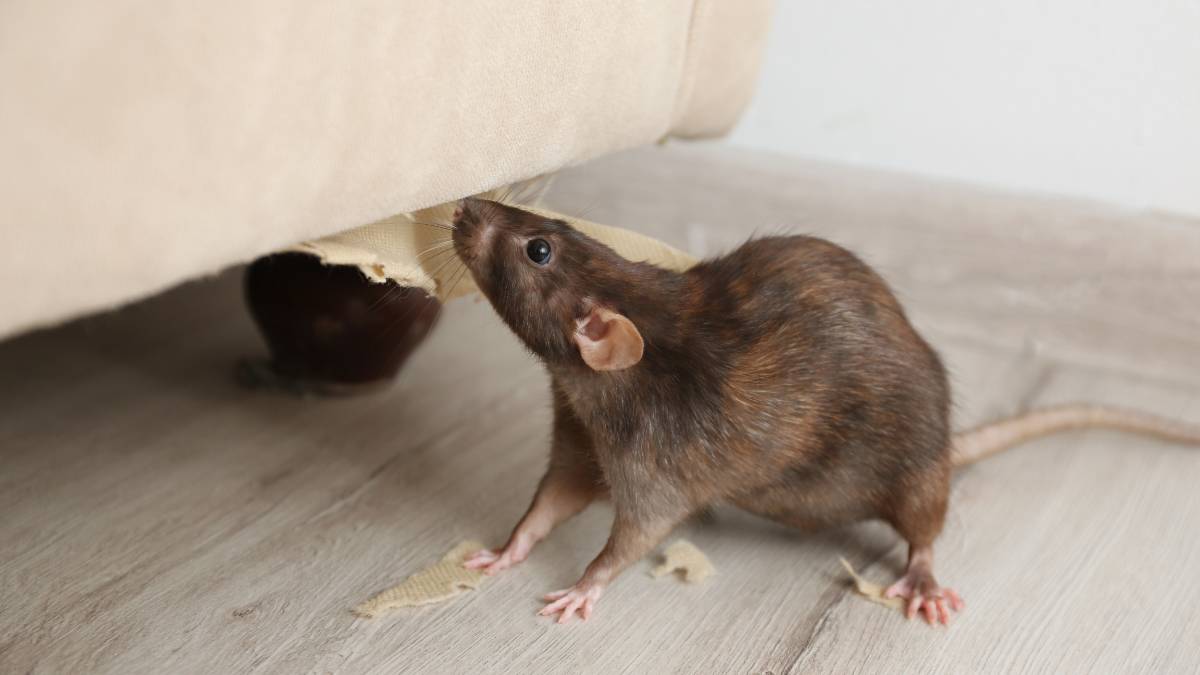Last Updated on December 5, 2023 by Kravelv Spiegel
It’s common knowledge that mice like to enter houses since these inquisitive tiny animals are continually searching for food, warmth, and shelter. Are there indications of mice in your home? You lay a trap and apprehend the less-than-sly intruder. You soon find yourself in the middle of the night with another one. Not only do mice cause damage and spread infections, but they also travel in packs and are difficult to eradicate.
Preventing these bothersome rodents from entering in the first place is the most effective strategy to keep them out. Are you curious about how mice enter your home? Discover what attracts mice to a home and the unexpected strategy they will employ to sneak in as discussed in this article.
Typical Mouse Entry Points
Holes & Gaps
Are there any holes under your deck or cracks on your outside walls? Mice possess exceptional sensory capacities, especially in scent and temperature perception. This implies they can quickly identify gaps where warm interior air is escaping outdoors. These are common entrance locations for mice. Mice can fit through openings the size of a quarter-inch button because of their flexible bodies.
To make matters worse, these rodents can use their powerful, sharp teeth to gnaw through insulation, drywall, and wood, creating new holes to reach their objective.
Windows and Doors
Mice love to live in spaces with holes beneath doors, poorly sealed windows, faulty door sweeps, and pet doors that are simple to access. Open windows use the same principle, even from a height. Yes, mice are skilled climbers that can scale any rough surface, like a garden trellis, brick wall, or tree trunk.
Plumbing and Sewer Systems
Although less frequent, mice can enter through sinks, showers, and bathtubs by crawling through pipes. Luckily, mice prefer to stay away from bodies of water and will only use this path in an emergency.
Vents and Roofs
Mice will jump from trees, balance along wires, and climb gutters to reach onto a roof. They have numerous possible entry points on roofs, such as chimneys, roof windows, gable vents, eaves gaps, and attic vents. After entering the attic, they will construct nests, gnaw on wires, and break through ceilings. Mice may reside under your roof if strange noises emanate from your attic at night. Cover your vents, chimneys, and downspouts with wire mesh to keep mice out of your home. They can enter through the roof.
Furniture That Is Stored in Storage Boxes
You may unintentionally attract a mouse into your house. Mice like to build their nests in isolated areas such as garages or sheds, using cardboard boxes, upholstered furniture, and mattresses. Ensure your boxes and furnishings are stored properly before bringing them inside to prevent this.
Why Do Mice Enter Your Home?
Food Supplies
Did you know that a mature mouse can survive on 1/10-ounce of food daily? Sadly, mice don’t have any taste buds and will eat anything that is provided. Cereal grains (including wheat, oats, and barley) and sweet foods are some of their favourites. Furthermore, mice like to eat what is readily available. Watch for pet food, pantry items, leftover snacks, and unsecured trash.
Comfort and Safety
Mice migrate inside during the fall and winter because, like humans, they would rather be warm when it’s freezing outside. If your house has many confined spaces, including messy basements and wall voids, adequate insulation, and a heating system, it’s more likely to get selected. Look through heat-producing appliances, such as dryers, freezers, water heaters, and ovens, which are also magnets for mice.
You could also use the help of pest control service to assist you in searching through your confined spaces. Rodent control services can quickly yet efficiently eliminate the problem and help you understand how these mice find their way into your heat-producing appliances. In addition, you are given tips to maintain a rodent free home and ways in which you can do it yourself. The services are affordable and the team are professionals.
Access to Water
Most mice get all the water they require from the food they eat, but when they come across a direct water supply, they almost never turn it down. When mice are inside, they frequently seek out sources of water to drink, such as pet water bowls, leaky faucets, overwatered houseplants, and condensation on windows or kitchen appliances. When no water is present, they search wet spaces like attics and basements for moisture.
Plant Life
Even after you’ve sealed your food storage, removed all water sources, and thoroughly cleaned your home, mice continue to be drawn to your property. The culprit might be your garden. For mice, fruit and vegetable gardens are a blessing since they provide hiding places, fresh food, and possible building materials for their nests. Worse still, mice love seeds and will eat newly planted seeds.
Summing it Up
To deter rodents and other pests, erect a garden fence. Given mice’s inclination for climbing and nibbling, only some barriers will hold. Select borders with materials they can’t chew, smooth surfaces they can’t grip, bars they can’t squeeze through, and a height they can’t jump over and enjoy a mice free environment!

